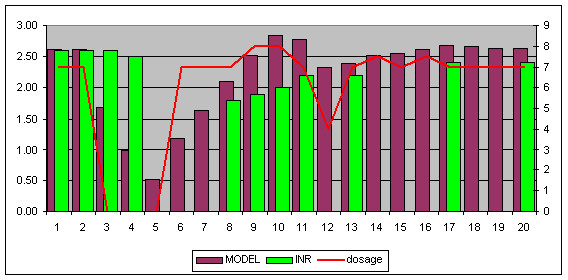marc_kowal
Well-known member
Sooo on the 26th of this month, I'm having my first colonoscopy performed (yah for me!), and will be bridging for the first time. I received my instructions from my cardiologists office yesterday, and wanted some input from people who have done this before. Just wanted to know if this was similar to what you did, or if something seems wacky.
7/21- STOP coumadin
7/22- NO Lovenox
7/23- Lovenox in the AM and PM
7/24- Lovenox in the AM and PM
7/25- NO Lovenox. Go to hospital for Blood Draw to check INR
7/26- Day of Procedure, NO Lovenox. Restart douible dose of Coumadin (normal is 4.5mgs, so double dose is 9 mgs) in the evening IF no biopsies or polyps removed. (If that is the case, cardiologist will adjust remaining instructions.)
7/27- NO Lovenox, Double dose of Coumadin
7/28- NO Lovenox, Double dose of Coumadin
7/29- NO Lovenox, Regular dose of Coumadin
7/30- Go to hospital for Blood Draw to check INR. Cardio will contact me with Coumadin instructions for this day
I was told to get a blood draw since the Lovenox could affect my home test results.
Thanks for the input!
~Marc
7/21- STOP coumadin
7/22- NO Lovenox
7/23- Lovenox in the AM and PM
7/24- Lovenox in the AM and PM
7/25- NO Lovenox. Go to hospital for Blood Draw to check INR
7/26- Day of Procedure, NO Lovenox. Restart douible dose of Coumadin (normal is 4.5mgs, so double dose is 9 mgs) in the evening IF no biopsies or polyps removed. (If that is the case, cardiologist will adjust remaining instructions.)
7/27- NO Lovenox, Double dose of Coumadin
7/28- NO Lovenox, Double dose of Coumadin
7/29- NO Lovenox, Regular dose of Coumadin
7/30- Go to hospital for Blood Draw to check INR. Cardio will contact me with Coumadin instructions for this day
I was told to get a blood draw since the Lovenox could affect my home test results.
Thanks for the input!
~Marc
























